Ford Maverick Vs Hyundai Santa Cruz: Which Compact Pickup is Right for You?

Back in 2006, in the span of two months, Hollywood released two movies centered on magicians: The Illusionist and The Prestige.
Sometimes these things happen; two parties will come to a similar on-paper conclusion to the same issue, completely separately. Ford and Hyundai know what I’m talking about: both revealed their compact pickups, the Maverick and Santa Cruz, within two months of each other, too.
Here’s the catch, though: just as both of those movies turned out to be quite different, so are these baby trucks. They target two niches of the same segment, and depending on your needs, one may be a smarter bet than the other.
Get a Quote on a New Ford Maverick or Hyundai Santa CruzAs the member of the AutoGuide team who has both driven the Santa Cruz and poked around a (stationary) Maverick, it seemed only right for me to handle this spec comparison. Before we drive both together, here’s everything there is to know about these two pickups.
Cabin Space
Maverick: Ford has built the Maverick off a version of the platform found under the Bronco Sport and Escape. That translates to a spacious interior for something with a 4.5-foot bed out back. Headroom is a generous 40.3 inches (1,024 mm) in front, and 39.6 inches (1,006 mm) for the second-row bench, without a sunroof. Equipped with the glass, the numbers shrink to 38.0 and 39.5 inches (965 and 1,003 mm), respectively.
SEE ALSO: 2022 Ford Maverick Hands-On Preview: 5 Reasons Ford’s Small Pickup is a Big DealFront-row riders will find a healthy 42.8 inches (1,087 mm) of legroom inside the Maverick. Coming in only one cab format, the Blue Oval pickup has an acceptable 35.9 inches (912 mm) of rear legroom in base engine form, and 36.9 inches (937 mm) with the optional EcoBoost motor. Thankfully, shoulder- and hip-room both stay the same regardless of engine. There’s 57.3 and 55.6 inches (1,455 and 1,412 mm) of shoulder room front-to-back; hip room is 55.4 and 54.1 inches (1,407 and 1,374 mm), respectively.
The Maverick’s interior design is decidedly more utilitarian than the Santa Cruz. Available leather seating can give it an added dose of class if so desired.
Santa Cruz: The Hyundai is around 4.0 inches (102 mm) shorter than the Ford. Most of that translates to a shorter bed; the interior measurements are all pretty close. For starters, the Santa Cruz offers a hair’s breadth less front headroom without a moonroof, at 40.2 inches (1,020 mm). Okay, 571 hairs—but who’s counting? That chops down to 38.4 inches (975 mm) with the moonroof, eclipsing the Maverick’s figure. Rear headroom is the same regardless of glass, at a tin-top-Mav-matching 39.6 inches (1,006 mm).
SEE ALSO: 2022 Hyundai Santa Cruz Review: First DriveLegroom is less generous in the front (41.4 inches / 1,052 mm) and right between the two Maverick lengths (36.5 inches / 926 mm). The Santa Cruz also beats the Maverick on shoulder room in either row, with 57.6 and 56.1 inches (1,464 and 1,425 mm). It’s a tighter squeeze at the hips though, with 54.5 inches (1,385 mm) of wiggle room up front; the rear bench features 53.5 inches (1,358 mm) of the stuff.
Hyundai has essentially brought the Tucson’s interior over wholesale here. That’s good; we rate it very highly, after all. Naturally the second-row experience is a bit different, since the seats now fold up, not down.
Bottom Line: Unless you’re breaking out the tape measure, there really isn’t much between these two mini-trucks in the space race. Interior ambiance matters too of course, but there’s a reason the Santa Cruz feels so much more lush…
Cargo Space and Towing
Maverick: The Maverick includes sizeable door pockets for your knickknacks, a tall yet narrow center console storage, and what Ford calls FITS (Ford Integrated Tether System). This little slot on the end of the center console allows owners to 3D-print their own accessories.
The Maverick’s bed is a 4.5-foot item. It features a multi-angle tailgate, and molded-in slots for 2x4s and 2x6s so owners can divvy up the space as they see fit. The tailgate will support up to 400 lb (181 kg), so yes, it can carry the proverbial sheets of plywood.
Towing capacity is capped at 2,000 lb (907 kg) with the standard hybrid powertrain. Upgrade to the EcoBoost motor, and that figure doubles to 4,000 lb (1,814 kg) with the proper package.
Santa Cruz: The Santa Cruz features a smaller, 4.0-foot bed. Hyundai has also included molded slots for wood here, as well as a separate, drainable trunk near the tailgate. Speaking of the latter, it can also sit at different angles, allowing the Santa Cruz to carry plywood too—so long as it’s all strapped in. Additional small storage cubbies exist on the sides of the bed, and there’s a factory-fitted tonneau cover available (standard in Canada).
Inside, the Santa Cruz features a healthy amount of storage spots. This includes a flip-up rear bench, similar to the Maverick.
Even though many of us may consider the Maverick the more workmanlike of this pair, it’s the Hyundai that posts the higher towing rating. The standard engine is rated to 3,500 lb; spec the turbo motor, which is standard in Canada, and that number swells to an even 5,000 lb.
Bottom Line: The Ford’s longer bed will no doubt help in certain situations. But the Hyundai can tow more. Which of those things matters more to you?
Technology and Features
Maverick: Even the base Maverick shows up with an 8.0-inch touchscreen. It runs the last-gen SYNC3 setup, however: it’s not the speediest UI out there, nor the prettiest—but it works. A 4.2-inch LCD is standard in the otherwise analog gauge cluster; higher trims bump it to 6.5 inches, making it easy to keep track of the hybrid system’s current charge.
Other standard features include LED headlights, remote keyless entry, second-row under-seat storage cubbies, and a 4G Wi-Fi hotspot. Higher trims add in additional storage cubbies in the bed, a power tailgate lock, Ford’s SecuriCode keyless entry keypad, alloy wheels, a power-sliding rear window, ambient lighting, and more. Ford’s traditional FX4 off-road package is available on the gas-powered XLT and Lariat trims, while the latter also includes a Luxury Equipment Group, decking out the Mav with adaptive cruise control, B&O sound system, plus heated front seats, sideview mirrors, and steering wheel.
Santa Cruz: Like the Maverick, the Santa Cruz includes an 8.0-inch infotainment system as standard equipment. It too features Android Auto and Apple CarPlay, though it’s wireless here. The base model uses analog dials, while a 10.25-inch screen is optional on the SEL in the US, and standard on the SEL Premium and Limited. In Canada, the mid-level trim includes the digital gauges. Both markets require their respective top trims to unlock a central screen the same size.
The Santa Cruz also includes keyless entry, two front USB ports, and power mirrors. Higher trims feature auto power windows, remote engine start, power driver’s seat, heated and ventilated front seats, Hyundai’s BlueLink connected car services, and more. The top trim piles on a Bose sound system, ambient lighting, and 20-inch alloy wheels, plus voice recognition.
The factory-built tonneau cover is optional on the SEL in the US; Canadians get it as standard, on all trims.
Bottom Line: Are you a gadget fan? Then the Santa Cruz is the obvious choice here.
Powertrains
Maverick: In a shocking move, Ford has made a hybrid drivetrain standard equipment in the Maverick. Similar to the setup in the Escape Hybrid, the Mav’s default engine setup is a 2.5-liter four-cylinder working with a 94-kW battery pack. Combined horsepower is 191, with 155 pound-feet of max torque. A continuously-variable transmission (CVT) sends power exclusively to the front wheels.
SEE ALSO: 2020 Ford Escape Hybrid Review: Friendly Fuel-SipperA 2.0-liter turbocharged EcoBoost motor is also available. Speccing this powerhouse is the only way to open up access to the optional AWD (it’s package deal in Canada). The four-pot produces 250 hp and 277 lb-ft of torque, all funnelled through an eight-speed automatic transmission.
Santa Cruz: Like its Blue Oval buddy, the Santa Cruz also comes with two engine options, at least south of the 49th parallel. Hyundai’s 2.5-liter naturally-aspirated engine is standard, spitting out a wholly adequate 191 hp and 181 lb-ft of torque. Front-wheel drive is standard, with AWD optional; an eight-speed automatic handles shifting duties with both.
Higher trims open up access to a turbocharged engine with the same displacement, but altogether healthier outputs of 281 horsepower and 311 lb-ft of torque. This one’s AWD-only, and uses Hyundai’s eight-speed dual-clutch transmission.
SEE ALSO: 2022 Hyundai Tucson Hybrid Review: Stylin’ On YouBottom Line: When we’re talking turbo power, we prefer the Hyundai engine to the smaller Ford unit, at least in everything we’ve driven them both in so far. We don’t see that changing in the Maverick and Santa Cruz.
That said, a lot of people will be buying the base engines, and it’s here that Ford has a huge advantage. The standard hybrid engine sacrifices zero power, and posts dramatically better fuel economy ratings. Until Hyundai brings its (also very good) 1.6-liter turbocharged hybrid drivetrain to the Santa Cruz, this is the Maverick’s category.
Fuel Economy
Maverick: It’s too early for official EPA certification, but Ford is targeting an EPA-estimated 40 mpg highway for its hybrid baby pickup. With an estimated 37 mpg combined, that suggests a 35 mpg city rating.
As for the EcoBoost model, there’s no word yet. We do know the mechanically similar Bronco Sport posts 21 mpg city, 26 mpg highway, and 23 mpg combined. That gives us a rough idea of what to expect with the Maverick.
Santa Cruz: In base front-drive form, the Santa Cruz matches the Bronco Sport’s numbers exactly: 21/26/23 mpg, respectively. Strangely, adding AWD bumps the highway figure up by 1 mpg. The turbo engine, available only with AWD, shaves 2 mpg off the city figure, resulting in a 22 mpg combined rating.
Bottom Line: While we wait for final Maverick EcoBoost figures, it’s plain as day that the hybrid is a big advantage here. The Ford wins this category.
SEE ALSO: Toyota RAV4 vs Honda CR-V: Which Crossover Is Right For You?Safety
Maverick: At the time of writing, neither the National Highway Traffic Safety Association (NHTSA) and Insurance Institute for Highway Safety (IIHS) have crash-tested tested the Maverick.
The Maverick only includes automated emergency braking (with pedestrian assist), auto high beams, and the government-mandated rearview camera as standard driver assists. You’ll have to pony up some additional cash for blind-spot monitoring, rear cross-traffic alert, and lane-keep assist (plus a full-size spare on hybrid models). Adaptive cruise control with stop-and-go functionality is limited to an option pack on the top-tier Lariat trim only.
Santa Cruz: As is the case with the Maverick, it’s too early for both the NHTSA and IIHS to rate the Santa Cruz.
Standard active safety features include automated emergency braking (with pedestrian detection), lane-keep assist, rear occupant alert, and driver attention warning. Move one step up from the base model and blind-spot monitoring, rear cross-traffic alert, and safe exit assist all join the lineup in the US. In Canada, all the above is standard from the get-go. Adaptive cruise control and a 360-degree camera are locked to the highest trim only.
SEE ALSO: Ford Ranger vs Toyota Tacoma: Which Mid-size Pickup is Right For You?Bottom Line: The Santa Cruz is better-specced from the beginning of the lineup through to the end of it. There’s got to be a reason it costs more, and that’s one of them.
Styling
Maverick: We like the big, non-threatening face of the Maverick. Trucks have all become aggressive—yes, even the Santa Cruz—but the Mav just looks like a friendly puppy. It’s very simple, which makes it an excellent blank canvas for buyers looking to customize it.
Santa Cruz: It might look like a Tucson with a truck bed at first glance, but there’s a lot of changes here: the two don’t share a single body panel. The grille is slightly more angular, the cool hidden lighting elements are arranged differently, and the wheel arches are fully circular. Around back, there are funky T-shaped taillights, a look unlike anything else in the pickup world.
SEE ALSO: Subaru Forester vs Nissan Rogue: Which Compact Crossover is Right for You?Bottom Line: The Santa Cruz is undoubtedly the more futuristic, and thus likely to divide opinion. The Ford feels friendly and familiar. As always, this one’s up to you, dear reader.
Pricing and Value
Maverick: $21,490. The Maverick’s headline price tag, including $1,495 in destination charges, is a huge deal. (It’s a still-reasonable $27,850 CAD in Canada.) Buyers will be sacrificing a few of the creature comforts found in compact cars around that price, but the Maverick counters with better gas mileage. In a pickup. The future really is now.
What’s more, Ford will let folks spec the higher-power engine, and AWD, on any trim. That means you could net a Maverick EcoBoost for as little as $24,795 ($30,495 CAD). The turbocharged Santa Cruz starts around $10,000 more on either side of the border.
There are three permanent trims: XL, XLT ($23,775 / $30,450 CAD), and Lariat ($26,985 / $36,400 CAD). Checking the EcoBoost box is an extra $1,085; the AWD is an additional $2,220. In Canada, both are a package deal, and a relative bargain at $2,500 CAD. The land of poutine also offers the Lariat exclusively with the EcoBoost engine.
Santa Cruz: The Santa Cruz starts from $25,175 for a front-drive, naturally-aspirated SE model. It is better-equipped, with nicer materials throughout the interior, but whether that’s enough to sway value-conscious shoppers is still up in the air. Adding AWD is an additional $1,500 on both the SE and SEL ($28,375).
Hyundai locks the more powerful turbocharged engine to the two top trims in the US: SEL Premium ($36,865) and Limited ($40,905).
The Canadian lineup is completely different. With the turbo engine and AWD standard, the Santa Cruz starts at a much higher $40,424 CAD north of the border. There are three trims there (Preferred, Trend, Ultimate), essentially mirroring the three top trims in the US. It tops out at $46,724 CAD, with the only options being color choice.
Bottom Line: This is where the Maverick really flexes its strength.$21,490 ($27,850 CAD) for a brand-new pickup capable of economy car levels of fuel efficiency is an appealing prospect. Even a well-equipped model will always undercut the equivalent Santa Cruz by a few thousand.
In Conclusion
Like the two film examples at the beginning of this article, the Ford Maverick and Hyundai Santa Cruz seem similar only at first glance. Dig deep though, and they both service two very different parts of an emerging segment.
Putting on our prognosticator hats, it seems obvious that the Maverick will be the bigger seller. That crazy-low starting price will be a major motivator, but the Ford maintains the value proposition across the board. Also, this is Ford we’re talking about: the truck people.
The Santa Cruz should be a hit for Hyundai, however. While it’s pricier, it justifies the added outlay in the dealership, where it will share floor space with the Tucson. It’s certainly better suited than its sibling to lugging around muddy mountain bikes or towing a pair of jet skis. Yet it doesn’t sacrifice any of the smooth-riding feel that has made the compact crossover segment the biggest one out there.
If you need a straight-forward, budget-conscious vehicle that can put in work when needed, look at the Maverick. Want something more like the family crossover, with an added dash of “active lifestyle”? The Santa Cruz could be just the ticket.
Become an AutoGuide insider. Get the latest from the automotive world first by subscribing to our newsletter here.

Kyle began his automotive obsession before he even started school, courtesy of a remote control Porsche and various LEGO sets. He later studied advertising and graphic design at Humber College, which led him to writing about cars (both real and digital). He is now a proud member of the Automobile Journalists Association of Canada (AJAC), where he was the Journalist of the Year runner-up for 2021.
More by Kyle Patrick

































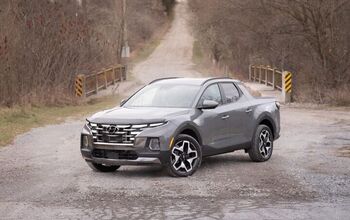
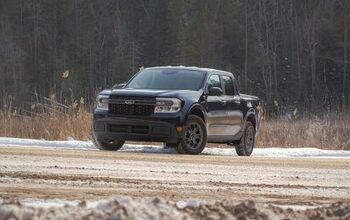
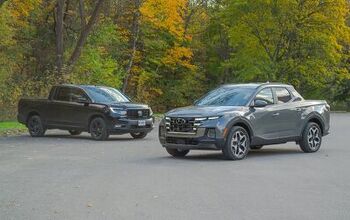
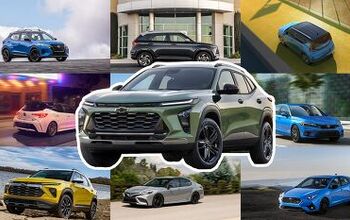


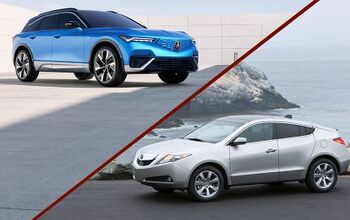


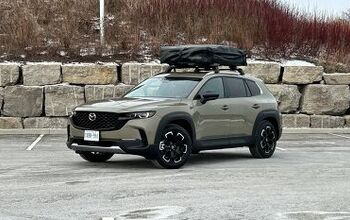
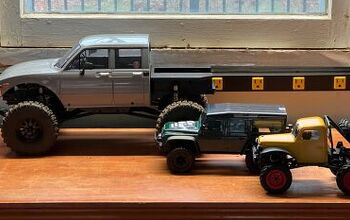


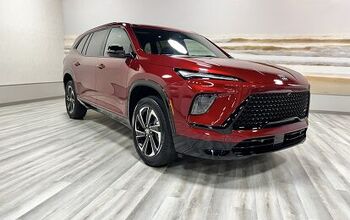
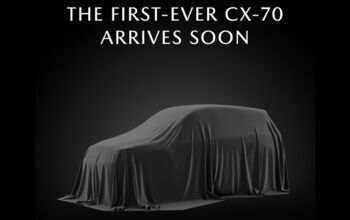
Comments
Join the conversation